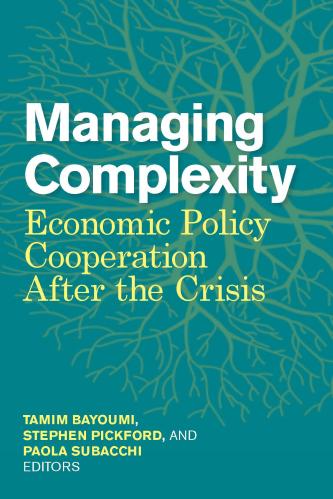Studies in this week’s Hutchins Roundup find that there are geographic differences in consumer financial distress, housing prices do not account for climate risks, and more.
Want to receive the Hutchins Roundup as an email? Sign up here to get it in your inbox every Thursday.
Both individual characteristics and location factors matter for financial distress
Using credit report data for 35 million people from 2000 to 2016, Benjamin Keys of the University of Pennsylvania, Neale Mahoney of the University of Chicago, and Hanbin Yang of Harvard University find persistent geographic disparities in consumer financial distress—debt in collection, credit card non-payment, and personal bankruptcy. The authors compare how individuals’ financial distress evolves when they move to places with different levels of financial distress. They find that moving to places with lower financial distress has little effect on debt in collection and credit card non-payment, suggesting that it’s individuals’ characteristics, not the place, that explains most of the geographic variation in financial distress. However, individuals are more likely to file for bankruptcy after moving to locations with high bankruptcy filings, consistent with anecdotal evidence suggesting that local legal factors influence the bankruptcy filing decision. “Individual characteristics determine whether you get into financial distress, while place-based factors determine whether you use bankruptcy to get out,” the authors say.
Housing Prices inadequately reflect climate risks
Miyuki Hino from the University of North Carolina at Chapel Hill and Marshall Burke from Stanford find that housing prices fail to fully reflect flood risk and other hazards. Using two decades of real estate sales data, they estimate that the 3.8 million floodplain homes in the U.S are overvalued by $34 billion, about 5%, raising concerns about the stability of real estate markets as climate risks materialize. They emphasize that this estimate is likely a lower bound since it relies on assessed values which are usually lower than sale prices. However, homes bought by commercial buyers or in states with stringent requirements on flood risk disclosures during real estate transactions are less overvalued. The authors conclude that enhancing communication on climate risks to buyers would improve market efficiency and discourage excessive development in hazardous areas.
Inter-industry earnings differentials account for rising inequality between firms
John C. Haltiwanger from the University of Maryland and James R. Spletzer from the Census Bureau find that almost 75% of the rise in wage inequality between firms—which dominates the overall rise in U.S. income inequality—is due to rising inequality across industries, as opposed to within industries. Most of this, they find, is due to a widening gap among industries in which workers are well-paid and those in which they aren’t, not due to changes in the distribution of employment across industries. In particular, they find substantial increases in earnings for management, business and financial, sciences, legal and healthcare occupations and sharp declines in protective services, sales, and construction jobs. Moreover, the authors estimate that 68% of the rising earnings differential between industries stems from rising inequality across occupations while 26% is due to changing occupation distributions across industries.
Chart of the week:
Quote of the week:
“We know that the disease is spreading quickly. With over one-third of our membership affected directly, this is no longer a regional issue – it is a global problem calling for a global response. We also know that it will eventually retreat, but we don’t know how fast this will happen. We know that this shock is somewhat unusual as it affects significant elements of both supply and demand: Supply will be disrupted due to morbidity and mortality, but also the containment efforts that restrict mobility and higher costs of doing business due to restricted supply chains and a tightening of credit. Demand will also fall due to higher uncertainty, increased precautionary behavior, containment efforts, and rising financial costs that reduce the ability to spend. These effects will spill over across borders,” says Kristalina Georgieva, Managing Director of the International Monetary Fund.
“Experience suggests that about one-third of the economic losses from the disease will be direct costs: from loss of life, workplace closures, and quarantines. The remaining two-thirds will be indirect, reflecting a retrenchment in consumer confidence and business behavior and a tightening in financial markets. The good news is that financial systems are more resilient than before the Global Financial Crisis. However, our biggest challenge right now is handling uncertainty. Under any scenario, global growth in 2020 will drop below last year’s level. How far it will fall, and for how long, is difficult to predict, and would depend on the epidemic, but also on the timeliness and effectiveness of our actions. This is particularly challenging for countries with weaker health systems and response capacity—calling for a global coordination mechanism to accelerate the recovery of demand and supply.”
The Brookings Institution is committed to quality, independence, and impact.
We are supported by a diverse array of funders. In line with our values and policies, each Brookings publication represents the sole views of its author(s).













Commentary
Hutchins Roundup: Consumer financial distress, floodplain homes, and more.
March 5, 2020